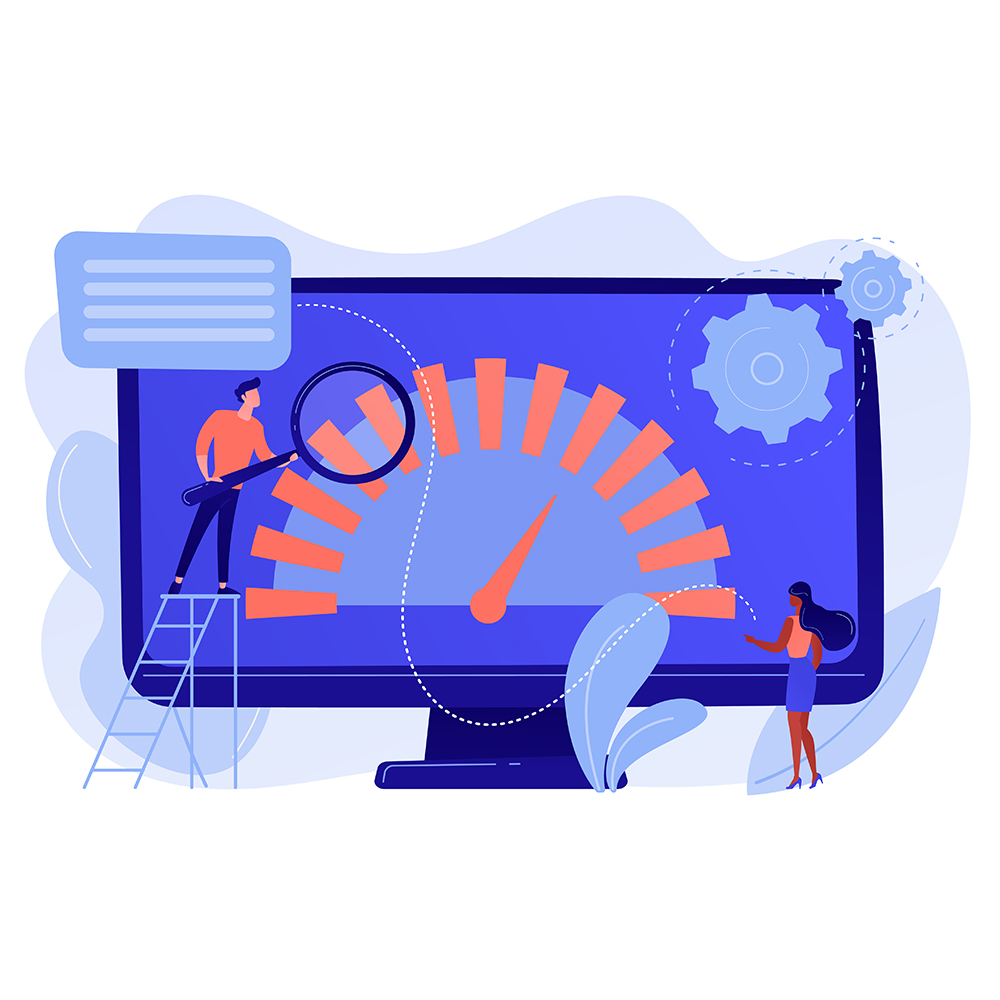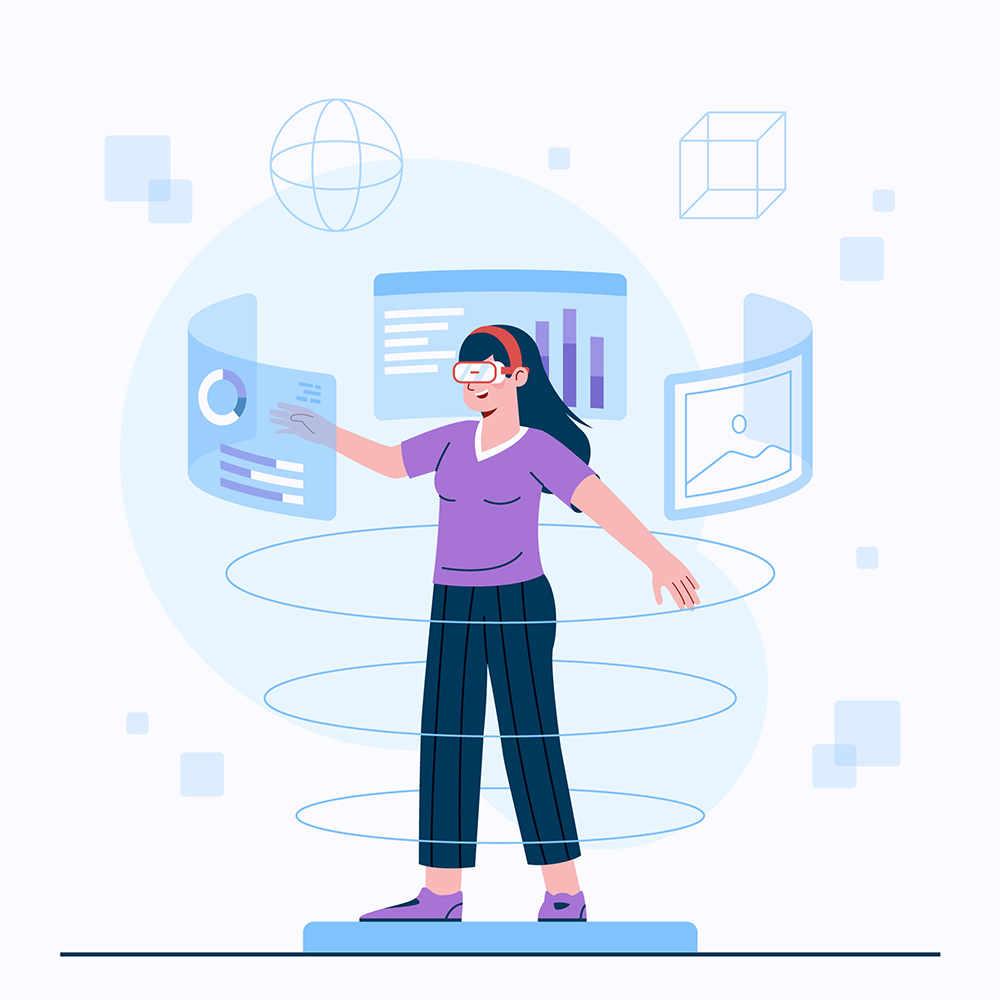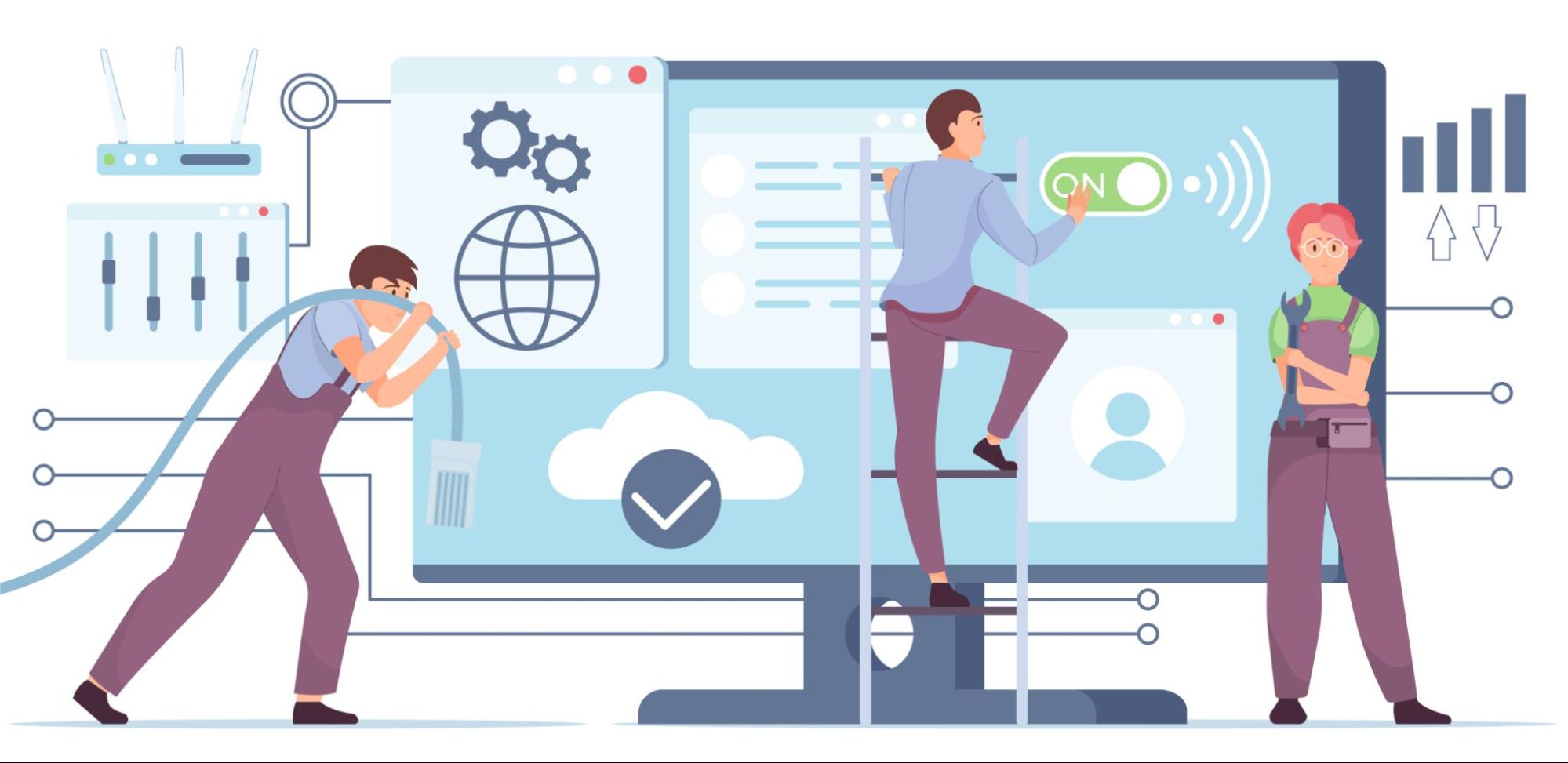Solving Latency in Real-Time Apps: From Gaming to FinTech

In today's fast-paced digital world, applications are not just tools; they are the central nervous system of our daily lives. From communicating with friends to managing finances, a seamless, instantaneous experience is no longer a luxury—it's an expectation. At the heart of this expectation lies one of the most critical, yet often invisible, challenges for developers: latency.
Latency is the delay between a user's action and the application's response. While a few milliseconds might seem insignificant, in the realm of real-time applications, they can make or break a user's experience. Imagine a multiplayer game where your character freezes for a split second, or a stock trading platform where a crucial price update arrives a moment too late. These delays don't just frustrate users; they can lead to lost revenue, decreased engagement, and a damaged reputation. This is where a strategic Mobile Application Development Solution for an Online Business becomes essential. It's not just about building an app; it's about engineering a high-performance system designed to be fast, reliable, and resilient against the ever-present threat of lag.
Different industries face unique and profound latency challenges. In the gaming world, a laggy connection can directly translate to losing a match and, in turn, a frustrated player who may churn and never return. In financial services, specifically with real-time trading apps, a delay of mere milliseconds can lead to substantial financial losses for a trader. Similarly, in healthcare, a slow response in a telemedicine app could compromise patient care, while in the Internet of Things (IoT), instant communication is vital for devices to operate safely and effectively.
Statistics highlight the urgency of this issue. Research indicates that more than half of mobile users will abandon a website or app if it takes longer than three seconds to load. For multiplayer online games, high latency can cause a 20-25% drop in active users during peak hours. In the financial sector, a slow mobile banking app can lead to a direct loss of customer trust and revenue.
To combat this, businesses must adopt a proactive approach. This often means partnering with a professional mobile application development company that specializes in creating responsive, low-latency systems. These experts understand that solving latency requires a holistic strategy, from the initial design phase to deployment and ongoing monitoring. They implement advanced coding practices, scalable architectures, and real-time monitoring to ensure that an app performs flawlessly across all devices and network conditions. This comprehensive guide will delve into the root causes of latency, provide actionable strategies to mitigate it, and offer real-world examples to help you create truly high-performance applications.
Understanding Latency in Real-Time Applications

To effectively combat latency, you must first understand its various forms. Latency isn't a single issue but rather a combination of delays that occur at different points in the user-to-server communication chain. We can break it down into three primary categories, all of which must be addressed to achieve a truly responsive user experience.
Network Latency
This is the most common and often most significant type of latency. Network latency is the time it takes for data to travel from a user’s device to a server and back. Think of it as the round-trip travel time for a data packet. Factors like the physical distance between the user and the server, network congestion, and the quality of the user’s internet connection (Wi-Fi, 4G, 5G) all play a critical role. For example, a user in India trying to connect to a server in the United States will experience significantly higher network latency than a user in the same city as the server.
For a developer working on a multi-region application, especially one focused on Android app development, it's crucial to account for a vast spectrum of network conditions. Developers must anticipate that users may be on a bustling city Wi-Fi network or a slow, unstable mobile connection in a rural area. Issues like packet loss (when data packets fail to reach their destination), jitter (the variation in the delay of received data packets), and limited bandwidth can all further degrade real-time performance.
Device Latency
Not all devices are created equal. Device latency refers to the delay that occurs on the user's end. An older smartphone with a slower processor or limited RAM may struggle to process and render the complex data and graphics required by a modern app. Heavy graphical elements, unoptimized animations, and inefficient data handling can all lead to a sluggish user interface. A skilled mobile application developer must be meticulous in their work, optimizing code and assets to ensure that the app runs smoothly on a wide range of hardware specifications, not just the latest flagship devices. This is particularly important for apps targeting a broad audience, as is often the case with many popular applications.
Server-Side Latency
Even with a perfect network connection and a powerful device, an app can still be slow if the backend is inefficient. Server-side latency is the delay introduced by the server's processing time. This can be caused by a variety of backend bottlenecks, such as unoptimized database queries that take too long to retrieve information, overloaded servers that can't handle the volume of requests, or a monolithic server architecture where a single slow process can block all other operations. Applications like mobile banking apps and real-time trading apps depend heavily on a robust, scalable backend that can handle millions of requests per second with minimal delay. A well-architected backend is the foundation of any low-latency application.
Guidance for Reducing Latency
Addressing these three types of latency requires a multi-pronged approach:
- Monitoring Tools: Use powerful performance monitoring tools like Firebase Performance Monitoring, New Relic, or AppDynamics. These tools provide deep insights into where delays are occurring, whether it's a specific API call, a slow database query, or a UI rendering issue.
- Caching: Implement caching at various levels. You can store frequently accessed data locally on the user's device or at the edge of the network. This reduces the number of requests that need to travel to the main server, significantly cutting down on server-side and network latency.
- Asynchronous Processing: Don't let a long-running task block the entire system. Use asynchronous processing to handle operations in parallel, ensuring that the app's main thread remains free and responsive.
- Load Balancing: For high-traffic apps, distribute incoming requests across multiple servers using a load balancer. This prevents any single server from becoming overloaded and creating a performance bottleneck.
Why Latency Matters in Online Businesses

In today's competitive landscape, user experience is king, and latency is a direct threat to it. Slow response times not only frustrate users but also directly impact a business's bottom line. The consequences of high latency are far-reaching and can affect every aspect of an online business, from user engagement to financial stability.
For mobile banking apps, user trust is paramount. Delays as short as two seconds during a fund transfer or a bill payment can lead to user anxiety and abandoned transactions. Customers expect instant confirmation for financial operations, and a slow, unreliable app can severely damage a bank's brand credibility. Similarly, for real-time trading apps, where seconds can equate to thousands or millions of dollars in profit or loss, a delayed stock price or execution order is simply unacceptable. The entire business model of these platforms is built on the promise of speed and precision.
In the entertainment industry, particularly for a multiplayer gaming app, latency directly affects the core gameplay experience. When player actions are not synchronized in real-time, the game feels unfair and unplayable, leading to high churn rates and negative reviews. The gaming community is notoriously unforgiving of performance issues, and high-demand games have reported a significant drop in active players during peak hours when latency exceeds 200 milliseconds.
Beyond these high-stakes examples, latency also matters in less obvious sectors. Telemedicine platforms need real-time, low-latency video and audio to ensure effective patient-doctor communication. In the burgeoning world of IoT, devices rely on immediate data exchange for correct operation, whether it's a smart home security system or an industrial sensor network.
To stay ahead, businesses must adopt a proactive approach:
- Design First: Prioritize latency reduction from the very beginning of the app design and architecture planning.
- Real-Time Analytics: Implement real-time monitoring and analytics to proactively identify and fix performance bottlenecks before they impact a large user base.
- Backend Optimization: Continuously optimize backend services and APIs to ensure the fastest possible response times.
- Cross-Platform Testing: Test your application across a wide range of devices, operating systems, and network conditions to ensure consistent performance.
By investing in a robust Mobile Application Development Solution for an Online Business, companies ensure that their users enjoy smooth, reliable experiences. This forward-thinking approach is what drives user engagement, reduces churn, and ultimately enhances revenue potential, not just in the US, Canada, and UK markets, but globally.
Common Causes of Latency in Mobile Applications

High latency is rarely caused by a single factor. It's often the result of a combination of issues that can be difficult to pinpoint without the right tools and expertise. Understanding these common culprits is the first step toward building a truly high-performance application, especially when engaging in custom mobile application development.
Backend and Server Inefficiencies
The backend is the brain of your application. If it's not well-optimized, everything else will suffer. Common backend issues include:
- Monolithic Servers: A single, large server architecture can become a significant bottleneck. A single slow database query or a heavy processing task can lock up the entire system, impacting every user.
- Unoptimized Database Queries: Poorly written or inefficient database queries can take an excessive amount of time to execute, leading to long server-side delays.
- Lack of Scaling: A backend that can't dynamically scale to meet user demand during peak times will quickly become overloaded, causing a spike in latency. This is a common challenge for projects involving cross-platform mobile application development, as a single codebase must serve a diverse and growing user base on both iOS and Android.
Network and Connectivity Issues
Network limitations are often beyond a developer's direct control, but their impact can be mitigated. These limitations include:
- Unstable Connectivity: A user on a spotty public Wi-Fi network will experience high packet loss, which forces data packets to be resent, increasing latency.
- Long Data Transmission Routes: The farther a data packet has to travel, the longer the delay. This is why using regional servers is a key strategy for global applications.
Heavy API Calls and Unoptimized Data
The way an app communicates with its backend can be a major source of latency.
- Excessive API Calls: An app that makes too many API calls for a single operation will naturally be slow. For example, fetching user profile data, then their friends' data, then their activity history, all in separate calls, can lead to cascading delays.
- Poorly Optimized Requests: The size of the data being sent and received matters. Large, uncompressed data payloads can significantly increase network overhead and slow down a response, especially on slower mobile networks.
UI Rendering and Device Diversity
The front end can also be a source of latency.
- UI Rendering Delays: Complex user interfaces with unoptimized animations or high-resolution images can tax a device's processor, leading to a sluggish and unresponsive feel.
- Device Diversity: The sheer number of different devices running Android app development and iOS mobile application development means that an app must be optimized for a wide range of hardware specifications. An app that runs perfectly on a high-end device might perform poorly on an older model.
Actionable Guidance to Address These Causes
- Audit Your Backend: Regularly review your backend architecture. Consider migrating from a monolithic structure to a microservices architecture. Optimize every database query for speed.
- Implement Caching: Use both client-side and server-side caching to reduce redundant requests and lighten the load on your backend.
- Compress Data Payloads: Use data compression algorithms (like gzip or Brotli) for your API responses to minimize the amount of data that needs to be transmitted.
- Optimize UI Components: Ensure that UI animations and data rendering are as efficient as possible. Use tools to identify and fix performance hogs.
- Use Performance Monitoring: Always use real-time monitoring tools to identify and address bottlenecks as they arise.
For example, a major financial platform was able to reduce its latency by 40% after performing a comprehensive audit of its database. By optimizing slow queries and implementing caching for critical endpoints, they dramatically improved the speed of their secure mobile banking apps. Similarly, a top gaming studio improved its gameplay experience by deploying regional edge servers, ensuring that players in different parts of the world had a consistent, low-latency connection.
Techniques to Solve Latency in Real-Time Apps

Mitigating latency requires a strategic blend of architectural, technical, and development-basedsolutions. The following techniques represent the most effective approaches used by top-tier enterprise mobile application development teams.
Edge Computing and Cloud Solutions
One of the most powerful strategies for reducing network latency is to bring computation and data storage physically closer to the user. This is the core principle of edge computing. By deploying regional servers or using a Content Delivery Network (CDN), you can serve content and process requests from the "edge" of the network, significantly reducing the distance data has to travel. For a global company, this can make a massive difference.
- Real-world application: High-performance multiplayer gaming apps like Fortnite and PUBG use edge computing to great effect. By deploying servers in different geographic regions, they ensure that a player in Japan is connecting to a server in Asia, not one in North America. This provides a consistent, low-ping experience for all players.
- Strategic implementation: A company building a real-time trading app can use edge servers to execute buy/sell orders faster, giving its users a competitive edge. Partnering with a skilled development firm that understands these cloud architectures is critical for a successful deployment.
Optimized APIs and Microservices Architecture
The architecture of your application's backend is a primary driver of performance. A monolithic architecture, where a single, large codebase handles all functions, can easily become a bottleneck. By contrast, a microservices architecture breaks down the app into smaller, independently functioning services. Each service can be optimized, scaled, and deployed independently, ensuring that one slow process doesn't bring down the entire system.
- Example: A digital payments solution can be broken into microservices for transaction processing, user authentication, and analytics. If the analytics service is temporarily slow due to a large report generation, it won't affect the speed of transaction processing for mobile banking apps.
- API Optimization: Beyond microservices, you must ensure your APIs are lean and efficient. This means using GraphQL to fetch only the data you need, batching requests to reduce the number of calls, and designing APIs that are intuitive and easy to use.
Data Compression and Caching Strategies
Every byte of data that travels over the network contributes to latency. By compressing data, you can significantly reduce the size of the payload, leading to faster transfer times. Caching, as mentioned earlier, is a fundamental technique for avoiding unnecessary server requests altogether.
- Best practices:
- Data Compression: Use standard compression algorithms like gzip or Brotli for all API responses.
- Strategic Caching: Implement a tiered caching strategy. Cache static assets (images, CSS) on a CDN. Cache frequently accessed dynamic data on the server side (in-memory caching) and on the client side (local storage).
- Preloading: For apps that require rapid access to specific data, consider preloading essential assets or data on app startup. This ensures the data is ready before the user even requests it.
Choosing the Right Tech Stack
The tools you use to build your app have a profound impact on its performance. The choice between native and cross-platform development frameworks is a major decision that directly affects latency.
- Native Development: For ultra-low latency and maximum performance, Android app development (using Kotlin or Java) and iOS mobile application development (using Swift or Objective-C) are the gold standards. Native apps are built for a specific platform, allowing them to leverage all of the device's native features and hardware capabilities without any performance overhead. This is the preferred choice for mission-critical applications like real-time trading apps and high-performance multiplayer gaming apps.
- Cross-Platform Development: Frameworks like React Native and Flutter app development allow developers to build a single codebase that can be deployed on both iOS and Android. While this can speed up development and reduce costs, it often comes with a small performance trade-off due to the layer of abstraction between the code and the native device. However, modern cross-platform frameworks have improved dramatically, and with careful optimization, they can achieve near-native performance.
- Custom Development: Ultimately, the best approach is to engage in custom mobile application development tailored to your specific needs. A skilled mobile application developer will help you select the ideal tech stack, design a scalable architecture, and implement performance-enhancing techniques to ensure your app meets its latency goals.
Real-World Case Studies: Gaming & FinTech

Examining how leading companies in high-stakes industries have tackled latency provides valuable insight. The challenges faced by the gaming and FinTech sectors are particularly instructive due to their extreme demands for speed and reliability.
The Gaming Industry: Lag is a Game-Ender
For a game like Fortnite, which can have millions of players in a single match, latency is a constant battle. The solution isn't just about fast servers; it's about a sophisticated network architecture. Online multiplayer apps like this rely on a global network of edge servers. When a player logs in, the game's matchmaking system places them on a server that is geographically closest to them, minimizing network latency. The game's code itself is also highly optimized. It uses a client-side prediction model, where the game client "guesses" the location of other players for a few milliseconds based on their last known movement. The server then sends a small, compressed packet to correct any discrepancies. This system makes the game feel responsive even with a slight lag.
The lesson here is clear: for any high-performance game app, you must invest in a robust, globally distributed infrastructure. User frustration from lag leads directly to lower player retention and negative word-of-mouth, which can destroy a game's community.
The FinTech Industry: Every Millisecond is Money
In the world of finance, milliseconds separate profit from loss. Secure mobile banking apps and high-frequency trading platforms cannot afford any delays. Top enterprise mobile application development firms build these apps with a relentless focus on performance and security. They use microservices to separate critical functions, ensuring that a surge in traffic on one service doesn't impact the execution of a trade.
- Example: A major stock trading app uses a dedicated, highly optimized microservice just for trade execution. This service runs on a high-performance server close to the exchange's trading engine. The app also uses sophisticated caching to serve real-time price data and charts from memory, rather than querying a database for every update. This approach ensures that a user's action to buy or sell a stock is executed with near-zero latency, even if other parts of the app, like the user's portfolio history, are momentarily slow to load.
These case studies highlight the importance of a well-defined Mobile Application Development Solution for an Online Business. It's about combining the right architecture, technology, and expertise to deliver a product that performs flawlessly under immense pressure.
The Role of Enterprise Mobile Application Development Companies
Developing a high-performance, low-latency application is a complex undertaking that requires specialized skills and experience. This is where enterprise mobile application development companies play a crucial role. They are not just coders; they are strategic partners who understand the intricate relationship between business goals and technical execution.
These firms bring a wealth of expertise to the table, from custom mobile application development to cross-platform mobile application development. They can architect a scalable backend, optimize code for maximum performance, and implement robust security protocols. Their benefits are manifold:
- Specialized Expertise: They have dedicated teams with deep knowledge in specific areas, such as creating multiplayer gaming apps or building secure, compliant real-time trading apps.
- Optimized Infrastructure: They know how to set up and manage cloud infrastructure, including CDNs, edge servers, and load balancing, to ensure optimal performance from day one.
- Tech Stack Selection: They can provide objective guidance on the right tech stack for your project, whether that means using Flutter app development for its cost-effectiveness or choosing a native approach for its raw power.
- Security and Compliance: For industries like FinTech, security is as important as performance. These firms ensure that secure mobile banking apps are built to meet or exceed industry security standards.
A true Mobile Application Development Solution for an Online Business is about more than just a single project. It's a long-term strategy for building a scalable, high-performance platform that can evolve and adapt as your business grows.
The Future of Real-Time Mobile Applications
The demand for instant, real-time experiences will only continue to grow, and new technologies are emerging that will fundamentally reshape how we think about latency. Businesses that want to stay ahead must keep a pulse on these trends.
- 5G Networks: The widespread rollout of 5G is a game-changer. With its promised ultra-low latency and massive bandwidth, 5G will unlock new possibilities for mobile gaming apps, immersive AR/VR experiences, and ultra-responsive, secure mobile banking apps.
- AI Optimization: Artificial intelligence and machine learning are being used to predict user behavior and optimize performance on the fly. Predictive algorithms can anticipate a user's next action and pre-fetch data, or they can dynamically route network traffic to the fastest servers. For high-performance game apps and real-time trading apps, this kind of predictive optimization will become a standard feature.
- AR/VR and IoT: The rise of augmented and virtual reality, as well as the exponential growth of IoT devices, will place even greater demands on real-time processing. For these technologies to provide a seamless and immersive experience, latency must be virtually eliminated.
Investing in a mobile application development company that is already working with these emerging technologies is a crucial step toward future-proofing your business. Flutter app development and other cross-platform frameworks are also evolving to better integrate with these new technologies, making it easier to build innovative, low-latency solutions.
Conclusion
Latency is more than just a technical issue; it's a strategic business challenge that directly impacts user satisfaction, brand reputation, and financial success. In today's digital economy, where consumers expect instant gratification, every millisecond counts. Applications in gaming, FinTech, healthcare, and IoT are at the forefront of this battle, and their success hinges on their ability to deliver a low-latency experience.
Implementing a comprehensive Mobile Application Development Solution for an Online Business is no longer optional—it's a requirement for survival and growth. By partnering with the right mobile application development company or a specialized enterprise mobile application development company, you can ensure that latency is addressed from the initial design phase through to deployment and ongoing maintenance.
Whether you're looking to build a next-generation multiplayer gaming app, a cutting-edge real-time trading app, or a highly secure mobile banking app, investing in custom mobile application development is the surest way to build a high-performance, low-latency powerhouse that will not only meet but exceed user expectations.
Ready to transform your idea into a responsive, high-performance application? Contact a trusted development partner today to learn how to build your low-latency masterpiece.
FAQs
1. What is latency in real-time applications?
Latency is the delay between a user’s action and the system’s response. In real-time apps, low latency is critical for smooth performance.
2. Why is low latency important in gaming?
In gaming, high latency can cause lag, making gameplay slow or unresponsive. Low latency ensures real-time reactions and a better user experience.
3. How does latency affect FinTech apps?
In financial applications, delays can impact transaction speed, trading decisions, and overall user trust. Minimizing latency is essential for accuracy and efficiency.
4. What factors contribute to latency?
Latency can arise from network delays, server processing times, inefficient code, or database response times.
5. How can latency be reduced in real-time apps?
Strategies include optimizing code, using edge servers/CDNs, caching, load balancing, and choosing faster protocols for data transfer.
6. Are there tools to measure latency?
Yes, tools like Ping, Traceroute, Wireshark, and application performance monitoring (APM) solutions can help measure and diagnose latency issues.
7. Can cloud solutions help reduce latency?
Yes, deploying apps closer to users using cloud regions or edge computing reduces network delay and improves responsiveness.
